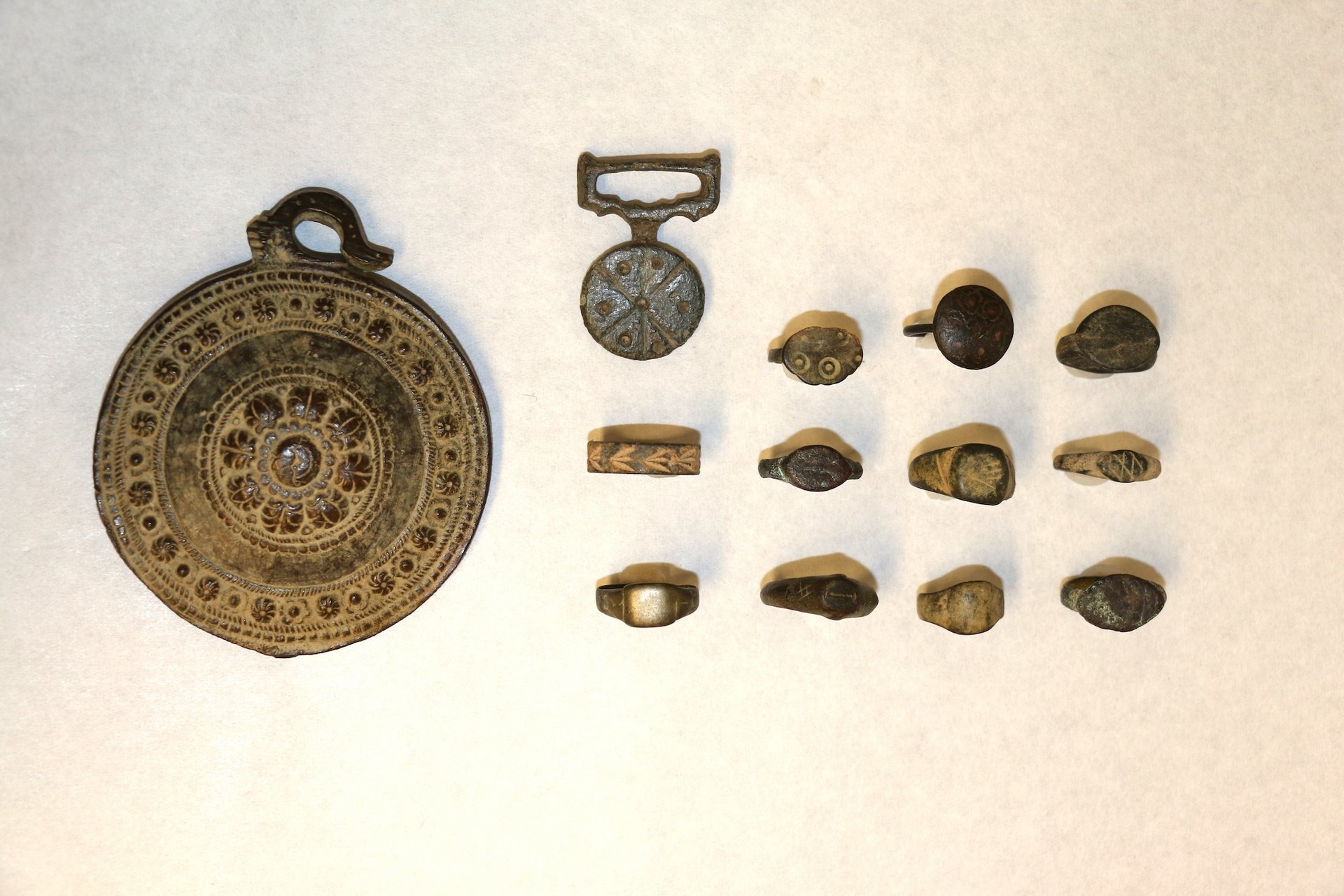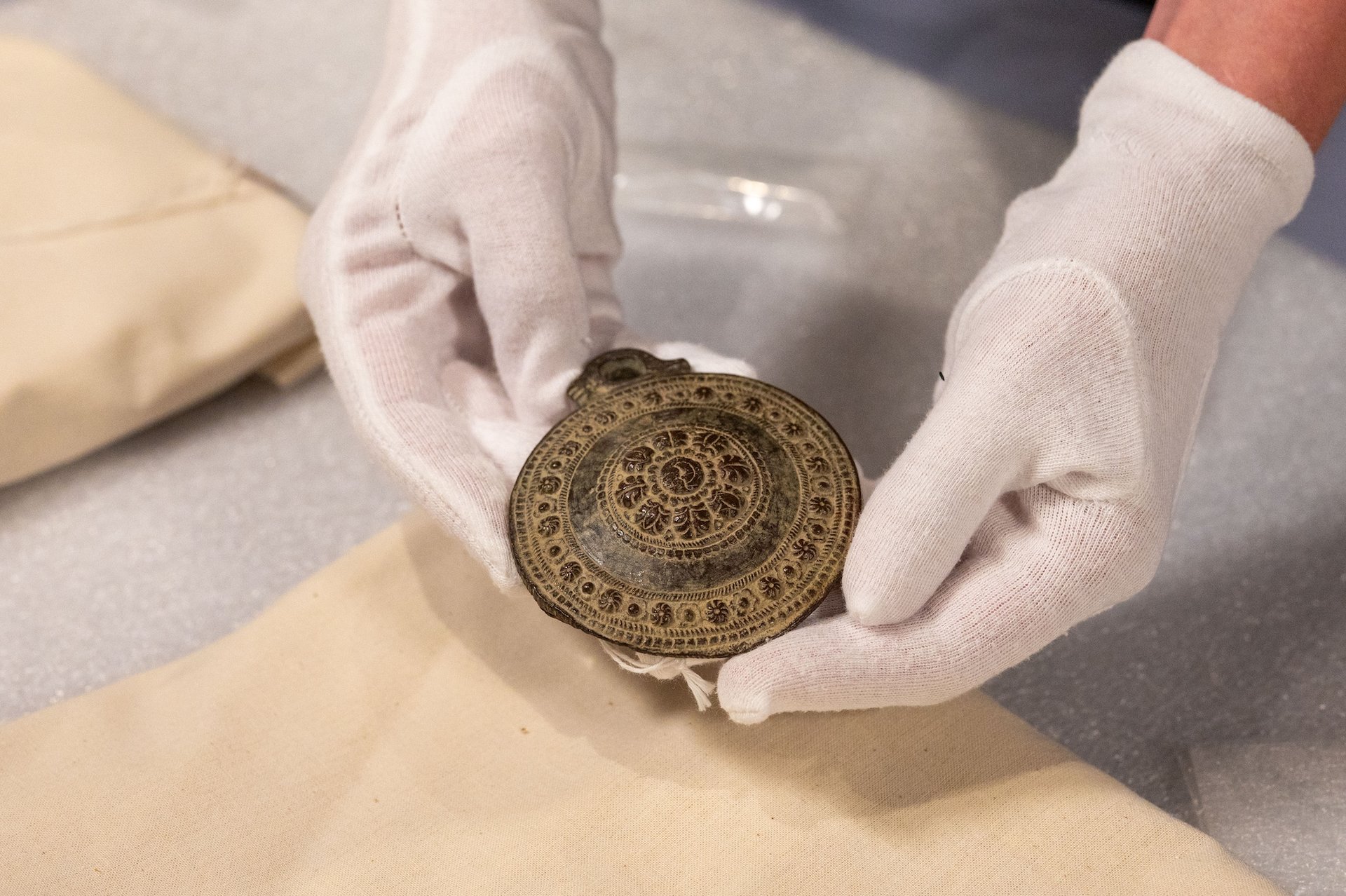A group of possibly-medieval artefacts that was uncovered in a second hand shop in western Canada will certainly create the basis of an unique, real-time knowing laboratory for pupils at Simon Fraser University (SFU) near Vancouver.
Sabrina Higgins, an associate teacher of Aegean and Mediterranean cultures and societies at SFU, tells The Art Paper that she has actually had “a substantial quantity of interest” in a training course she has developed for the autumn semester around the special discover. Trainees will certainly get to evaluate the styles and products for recognizing where and when the products originate from. Their research study will finish in an exhibition at the college’s Museum of Archaeology and Ethnology on the history and biography of the artefacts, along with the ethical factors to consider that excavators and museums face.
The things in question are 11 rings and 2 medallions, which Higgins believes are medieval. Determining their provenance will belong to the program itself. But the tale of how they reached SFU is as fascinating as the origins of the artefacts themselves.
“I was approached by Thrifty Shop over a year back, when one of their volunteers reached out to me concerning some items that they had for sale in their shop” Higgins describes, describing a charity look for the hospice in Chilliwack, an agricultural area eastern of Vancouver in the Fraser Valley.

The complete collection of artefacts donated to SFU for study Image: Simon Fraser University/Museum of Archaeology & & Ethnology
A volunteer had located the rings and medallions while sorting with a box of donations and displayed them available for sale at around C$ 30 ($ 21 each, Higgins claims. A client with a background in archaeology happened to notice them and encouraged the supervisor that the objects could be old. The supervisor removed them from the shelves and gotten in touch with Higgins, preparing an appointment with her at the college’s Museum of Archaeology and Ethnology as component of a possible contribution.
“Typically we do decline items that do not have a well-known provenance, and we had a lot of internal discussions around the ethics of taking these items,” Higgins states. Inevitably she and her coworkers chose that accepting the possessions right into their treatment was far better than them potentially being liquidated.
“We likewise considered the academic worth of these objects, and my colleague Cara Tremain and I pitched the concept of designing a course around them in which our archaeology trainees might discover just how to research objects of unidentified provenance from start to finish,” Higgins says. Therefore, the gallery chose to accession the objects.
Higgins states she assumes the artefacts most likely originate from somewhere within the boundaries of what was once the Western Roman Empire. She adds: “The shapes, styles and construction make me believe that these are medieval, as the Romans generally utilized somewhat different materials and methods.”
The most interesting of the artefacts, claims Higgins– who along with being a professional in very early Christian archaeology is the supervisor of SFU’s branch of the Stavros Niarchos Structure Centre for Hellenic Researches– is the smaller sized medallion. It births a “Christogram”, or the sign for Christ, consisting of the Greek letters “CH” and the Roman letter “RH.”

Among the artefacts contributed to SFU for research study Photo: Simon Fraser University/Sam Smith
The program Higgins and Tremain have actually made around the items will certainly be a first of its kind at the university “whereby pupils are associated with the whole procedure of accessioning a collection, while all at once dealing with the ethical implications of tackling this particular collection”, Higgins states. They will likewise obtain hands-on experience, she adds, including historical study, scientific analysis and using electronic technologies to research items. Pupils will certainly likewise aid create the exhibition highlighting both the things and the process of investigating them.
Provenance will be tough to figure out, Higgins claims, specifically on the side of the history of the collection, as no one knows who provided the artefacts to Thrifty Shop. But provenance can potentially be determined through scientific analysis and taking a look at comparable materials in archives.
“It’s extremely unlikely, nonetheless, that we will certainly be able to determine the provenance of a lot of these artefacts,” Higgins says. Yet “for our students, this will be an unbelievable possibility to deal with materials that have no provenance and via the experience will obtain first-hand knowledge of the detective job that enters into archaeology and museum studies.”